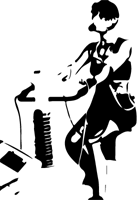Cardiopulmonary exercise testing ( CPET )
Cardiopulmonary exercise testing ( CPET ) is a type of exercise testing that can precisely detect and later follow some of the diseases of the heart and lungs. The exercise test itself is performed by the patient, simultaneously running the on the track (or drive ergo bicycle) and wearing a mask on his face, which allows medical staff to get the gas exchange parameters.
In this way, in addition to standard information received on cardiopulmonary exercise testing ( CPET ), such as the appearance of symptoms and electrocardiographic changes, the behavior of blood pressure and heart rate, you receive and gas exchange at rest and at exertion.
The obtained parameters are used for fine assessment of the heart and lungs. Clinical situations in which the cardiopulmonary exercise testing ( CPET ) is mainly used are: assessment of exercise intolerance, undiagnosed effort intolerance, a complete assessment of patients with cardiovascular disease, the assessment of patients with lung disease, preoperative treatment of patients, the assessment of effectiveness of rehabilitation treatment, and can determine the functional capacity of patients after heart and the lung transplants.
Cardiopulmonary exercise testing ( CPET ) is recommended for patients with unexplained feeling of shortness of breath (dyspnea), when it is possible to accurately assess whether it is due to cardiac or pulmonary disease. Parameters of gas exchange can not be precisely detected when patient is reasting. Only when patient is exposed to a physical activity these changes can be detected.
Cardiopulmonary exercise testing ( CPET ) is shown that the prognosis significantly depends from parameters of gas exchange for patients with certain heart diseases such as heart failure. Therefore, the results of cardiopulmonary exercise testing ( CPET ) are used for selection of the most difficult patients with heart failure in order to form a waiting list for a heart transplant.
Cardiopulmonary exercise testing ( CPET ) for athletes
During the cardiopulmonary exercise testing ( CPET ), you will get a relatively large number of different parameters, but the greatest clinical significance has oxygen consumption during exercise (VO2). For any person in relation to gender and age the value of oxygen consumption is predicted. The result can therefore be expressed as a percentage of the anticipated oxygen consumption in relation to gender and age, where in that case of more than 80 percent it is considered to be a normal finding.
Depending on the obtained values for oxygen consumption, patients daily physical activity which is optimal and safe at the same time, can be recommended. Cardiopulmonary exercise testing ( CPET ) recently is used for the detection of coronary artery diseases, because this method have certain advantages over traditional exercise stress test, due to the fact that subtle change in gas exchange can occur earlier than electrocardiographic changes and angina appearance.
Cardiopulmonary exercise testing ( CPET ) is daily used in functional capacity evaluation of athletes. In addition to measurements of oxygen consumption, it is useful to determine the moment of fatigue of the body, which leads to acidic metabolites (anaerobic threshold). Based on the values of oxygen consumption and anaerobic threshold (normally from 45-65 percent VO2), we can more accurately assess the well trained athletes, and later monitor the effects of training.
You may also like:
- Cardiac tamponade
Cardiac tamponade is a rare life-threatening complication in which there is accumulation of fluids, blood, clots, or gases in the pericardial space.
- Inappropriate sinus tachycardia
Inappropriate sinus tachycardia is a heart rhythm disturbance or form of arrhythmia in which the resting heart rate is very high greater than 100 beats per minute.
- Bradycardia symptoms
Bradycardia is a heart arrhythmia that is characterized by a very slow heartbeat. Bradycardia symptoms are fatigue, weakness, shortness of breath, fainting, dizziness, memory problems and sleep problems.



